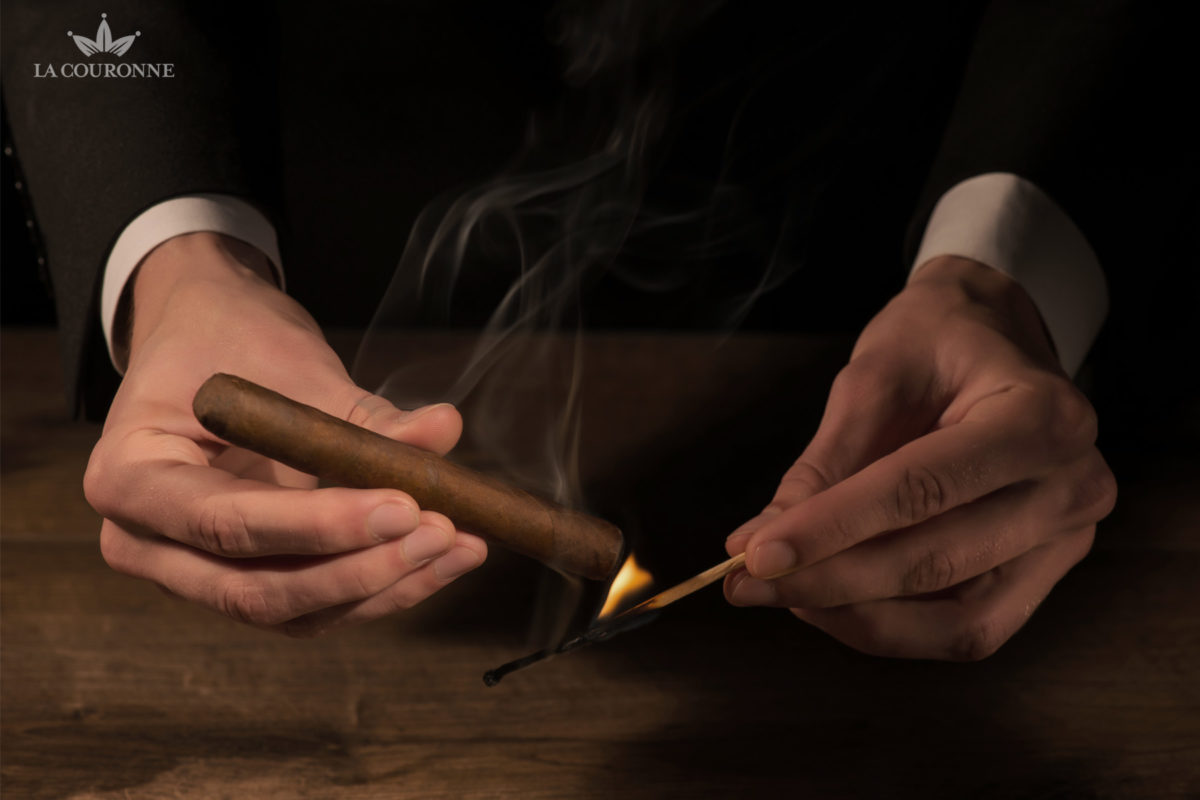L'académie du cigare, All about cigars
How to organize a blind tasting?
Whether you're thinking of becoming a cigar sommelier or just a cigar enthusiast, a blind tasting is the ideal way to develop your palate and sharpen your senses. Used every year by Cigar Aficionado to draw up its famous list of the "25 best cigars of the year", this exercise enables you to evaluate a cigar objectively, without being influenced by its brand or price. In this article, we explain how to organize a blind tasting, alone or with friends.
What is a blind tasting?
Contrary to what many articles and enthusiasts claim, a blind tasting is not a tasting technique involving blindfolding, but a tasting exercise during which the identity of a cigar is veiled. This means that the tester has no access to the cigar's name, brand, terroir or price. In practice, this means tasting cigars without their bands, whose price and origin are unknown to us.
Widely practiced by wine and spirits connoisseurs, this exercise should enable you to concentrate on the construction and personality of each module. It can be done alone (with the help of an accomplice) or in a group. It can also be done with one or more cigars. It all depends on the time and budget you wish to devote to it.
What's the point of blind tasting?
A blind tasting is a way of evaluating a cigar objectively, free from any outside influence. It's about approaching a tasting without prejudice or preconception. When you buy a premium cigar marketed by a renowned brand such as Cohiba or Arturo Fuentethe price of your module and/or the brand's reputation can influence your perceptions. You may expect an extraordinary smoke and convince yourself of its exceptional character without really paying attention to your actual impressions. In the same way, you might overlook an unusual cigar, thinking that its low price is a sign of nothing good, or that its manufacturer's lack of notoriety reflects a lack of know-how.
Performing a blind tasting should enable you to evaluate a module impartially, simply for what it is. It's also an excellent way of reinforcing your ability to listen to yourself. Far from being an academic constraint rooted in performance, this exercise should enable you to learn to put into words what you're feeling, to focus on your sensations, in order to get to know yourself better. If you want to become a cigar sommelier, this method is also ideal for identifying specific notes and aromas to create perfect pairings. In fact, blind tasting is one of the must-do events at international cigar sommelier competitions.
The stages of a blind tasting
Blind tasting requires special organization. It must also be carried out in compliance with certain stages in order to be truly relevant.
Preparing for a blind tasting
Selecting cigars
As you can imagine, the choice of cigars must remain a secret from those taking part in the tasting. If you're doing this test with friends, you can designate an experienced person to select and prepare the different cigars. However, this person cannot take part in the tasting. You can also organize a solo blind tasting by asking your retailer to select an assortment of cigars for you. He or she will remove the band from each module and number them so that you can identify them once the tasting is over.
Removing cigar bands
Regardless of the number of participants, it is imperative that each cigar has its band removed. This operation must be carried out with care, as cigar bands are generally attached with a dot of vegetable glue. Take care to remove them without damaging the wrapper.
Create an identification card
Secondly, it is essential that the organizer keeps track of the identity of the cigars. The most common method is to replace each ring with a numbered band. The outsourcer then creates an identification card on which each cigar is assigned a number.
Preparing your palate
Practising blind tasting with a clean palate will improve your tasting skills, helping you to distinguish more subtle flavours. That's why it's a good idea to consume neutral-flavored foods or beverages, such as bread or water, before each tasting. These foods cleanse the mouth of residues and help to "reset" the palate.
Cigar evaluation in a blind tasting
For your tasting to be truly constructive, it's important to take the time to record your impressions at every stage. This can be done with the help of a tasting sheet, or by creating your own scoring system. Your evaluation should include details such as the cigar's appearance, draw, burn, complexity and harmonious aromas.
Appearance and construction
Before tasting your cigar, take the time to observe it in order to assess the quality of its construction and overall appearance. Just as a dish is first discovered with the eyes, observing your module will give you a first idea of its quality and arouse your curiosity for the rest of the tasting. Take the time to observe the characteristics of the cape: its color, texture, veining and nuances. Then observe how the cape has been rolled. Are there any defects? Is it attached with a single, double, triple or corkscrew cap? You can also gently palpate your cigar to detect any hollow spots.
Draft and combustion
The quality of the draft can be tested in the raw, without any combustion. Simply cut the cap off your module and pull it without lighting it. A good draw should offer some resistance without being too tight. Then light your cigar, taking care to turn it gradually. This will limit the risk of combustion defects, such as canoeing. Then judge the regularity of the burn. This is one of the most important qualities of a top-of-the-range cigar, since it's what allows us to assess the quality of the blend and take full advantage of the cigar's aromas.
Harmony and complexity of aromas
During your tasting, take time to note your taste impressions. Try to distinguish the different aromas and flavors perceived in each third of the cigar. Is the aromatic palette complex or linear? You can also ask yourself whether the aromas and flavors blend harmoniously, whether the taste is pleasant or not. Remember, this is an exercise to help you better identify your impressions, to strengthen your sense of taste and smell, not an academic constraint based on a duty to perform. The most important thing is to listen to yourself and enjoy the tasting.

